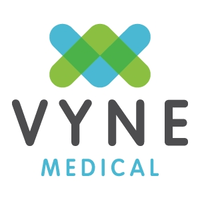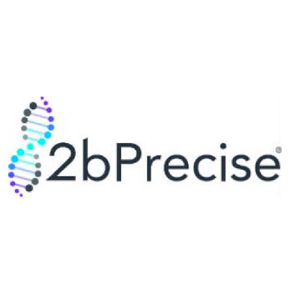 Running a medical practice comes with a wide range of responsibilities. From patient record management to abiding by regulatory medical guidelines, you have a long list of priorities to tend to. One of these priorities is marketing for your medical practice. This is an essential step in promoting the positive image of your clinic, fostering patient loyalty, and attracting new patients.
Running a medical practice comes with a wide range of responsibilities. From patient record management to abiding by regulatory medical guidelines, you have a long list of priorities to tend to. One of these priorities is marketing for your medical practice. This is an essential step in promoting the positive image of your clinic, fostering patient loyalty, and attracting new patients.
When it comes to marketing your medical practice, there is perhaps no ingredient more important than the website you create. Your business’ website is often the first point of contact patients (both current and potential) have for your practice. With that in mind, you want to do everything in your power to make sure it provides an excellent first impression.
- Choose an Intuitive Web Template
No matter which web builder you choose – whether it’s Wix, WordPress, Squarespace, or another – you’ll have a selection of templates to choose from. Be sure to take your time and think carefully about your choice in this step. Put yourself in your clients’ shoes and ask yourself what you would look for on a medical practice website.
Odds are, you would want it to be easy to find the contact information of the clinic. You would also want a seamless and convenient appointment booking experience (which would be facilitated by a booking call-to-action button on the homepage). Intuition and navigation capacity should be at the forefront of your decision-making process, as these will help boost the user experience (UX).
Don’t know where to start looking for template inspiration? Have a look at the Shesquantes Odio template. This aesthetic layout gives you an idea of how to structure your own site so it is both pleasing to the eye and easy to navigate.
Continue Reading
The American Medical Association (AMA) today announced that the Current Procedural Terminology (CPT) code set has been updated by the CPT Editorial Panel to include vaccine and administration codes that are unique to a new formulation of the COVID-19 vaccine developed by Pfizer. The new formulation is based on a tris-sucrose buffer rather than the phosphate buffer present in the original formulation.
The provisional CPT codes will be effective for use on the condition that tris-sucrose formulation of Pfizer’s COVID-19 vaccine receives approval or emergency use authorization from the U.S. Food and Drug Administration (FDA). The AMA is publishing the CPT code update now to ensure electronic systems across the U.S. health care system are prepared in advance for the potential FDA approval or authorization of the tris-sucrose formulation of Pfizer’s COVID-19 vaccine.
The development of vaccine-specific CPT codes has clinically distinguished each coronavirus vaccine and dosing schedule for better tracking, reporting and analysis that supports data-driven planning and allocation. COVID-19 vaccines from AstraZeneca, Janssen (Johnson & Johnson), Moderna, Novavax and Pfizer’s original formulation have previously been issued unique CPT codes.
To help ensure accurate coding and reporting of COVID-19 vaccines and immunization services, the AMA offers a vaccine code finder resource to help identify the appropriate CPT code combination for the type and dose of COVID-19 vaccine provided to each patient.
For quick reference, the new vaccine and administration codes assigned to the tris-sucrose formulation of Pfizer’s COVID-19 vaccine are:
Continue Reading
 Vyne Medical, a leading provider of health information exchange and electronic healthcare communication management solutions, today announced the acquisition of Ahana Health and its connected care technology. Designed to empower groups of clinicians to collaborate in delivering high-quality care to patients, the solution will be incorporated into Vyne Medical’s cloud-based Refyne platform.
Vyne Medical, a leading provider of health information exchange and electronic healthcare communication management solutions, today announced the acquisition of Ahana Health and its connected care technology. Designed to empower groups of clinicians to collaborate in delivering high-quality care to patients, the solution will be incorporated into Vyne Medical’s cloud-based Refyne platform.
The connected care solution provides a virtual space for healthcare providers to collaborate with each other and with patients, delivering care that transcends geographical and organizational boundaries. The solution also enables live, one-on-one clinical encounters, provider/patient-initiated care, and the ability to build care plans for patients with complex care needs.
“Data-sharing among practitioners has long been a challenge, and it’s one we meet head-on by integrating this collaborative functionality into our rapidly evolving Refyne platform,” said Marcy Tatsch, president of Vyne Medical. “This innovative solution was created to streamline and improve patient care delivery for a group of regional clinicians, and we see a clear path for expanding its use to bring that same level of advanced care connectivity to hospitals and health systems across the country.”
Vyne Medical’s SaaS-based Refyne platform helps optimize workflows and maximize reimbursements for hospitals, health systems and other care providers. Its initial release focused on denials management and featured the Refyne Audits solution to streamline government audit workflows through the electronic submission of medical documentation.
The Refyne Connected Care solution supports provider initiatives such as shared care planning, workforce collaboration and virtual care options. The functionality will assist providers in partnering to deliver an optimized patient experience through improved care coordination and digital innovation.
“We are thrilled to join Vyne Medical and align around the mission of connecting disconnected data across the care spectrum,” said Chelsea Bodnar, MD, founder of Ahana Health. “The voices of providers and families who contributed to the development of this technology will now be amplified as Vyne integrates the solution to improve care experiences for both the clinicians who deliver care and the patients who experience it.”
Do you have a dental practice and want to know if you are up to date with all the latest technology? Are you curious as to how technology has been implemented in the dental care world and want to know what kind of tech they make use of?
Technology has changed the way we live and work. It’s also changing the way we take care of our teeth. From dentist offices such as Winnipeg dentists, to dental assistants, technology is making it easier for all those involved in dentistry to do their jobs better and more efficiently than ever before.
Dental assistants can now use software that automates many of their tasks, freeing them up to spend more time with patients and helping doctors provide quality care. From apps that remind you to brush your teeth every morning, to dentists who make house calls, there are many new ways to improve oral health. Continue reading to find out more about how technology has improved dental care
Continue Reading
 AccessDX Holdings, an international provider of advanced laboratory diagnostic solutions, has acquired 2bPrecise from Allscripts Healthcare Solutions. A recognized leader and innovator in healthcare informatics, 2bPrecise enables organizations to amplify their precision medicine strategies by delivering point-of-care insights so providers can identify patients at risk for heritable conditions, arrive at precise diagnoses more quickly and initiate optimal therapies more quickly.
AccessDX Holdings, an international provider of advanced laboratory diagnostic solutions, has acquired 2bPrecise from Allscripts Healthcare Solutions. A recognized leader and innovator in healthcare informatics, 2bPrecise enables organizations to amplify their precision medicine strategies by delivering point-of-care insights so providers can identify patients at risk for heritable conditions, arrive at precise diagnoses more quickly and initiate optimal therapies more quickly.
2bPrecise will join the AccessDX portfolio of industry-leading diagnostics, software and services, including the MedTek21 software platform which facilitates diagnostic-based clinical decision support, compliance and program analytics for thousands of care organizations, patient groups and providers. The combined strengths of AccessDX and 2bPrecise ensure meaningful insights will be accessible within the clinical workflow of any EHR, while helping organizations streamline virtually all aspects of establishing and supporting precision medicine programs.
“We’re thrilled to welcome the 2bPrecise team and platform as we execute on our combined vision for democratizing the use, interpretation and delivery of advanced diagnostic solutions at the point of care,” said Joe Spinelli, SVP of product & strategy for AccessDX. “Combined, our worldwide organization will be able to accelerate the pace of innovation and best serve the needs of healthcare organizations that continue to expand their adoption of actionable precision medicine solutions.”
Utilization of genetic and genomic data is accelerating across nearly all clinical specialties, perhaps most notably in behavioral health/psychiatry, neonatology and pediatrics, oncology and cardiology. Providers can arrive at precise diagnoses faster and initiate effective treatments sooner when genetic and genomic information is available and actionable. Providers, payers and clinical organizations alike agree that the ability to seamlessly access information within their clinical workflow is key to precision-medicine success.
“AccessDX is a genuine leader in genomic information management. Our collective capabilities will serve as a force multiple for the practical utilization of precision medicine,” said Assaf Halevy, founder and CEO of 2bPrecise. “With a unified mission to drive dimensional change in healthcare, the combined talents and energy of 2bPrecise and AccessDX will compound acceleration in delivering on our vision of intelligent, personalized care for the good of healthcare organizations and the patients they serve.”

With the introduction of newer applications, data strategies, assistive listening devices and more, technology is helping to improve the quality of life of seniors, especially those in care facilities. The pandemic accelerated the implementation of advanced technologies and now more seniors own a smartphone or take part in video conferencing and telehealth, for example. This has allowed them to reach out to family and friends remotely and access more information related to their health. Here are a few examples of how technology is improving the quality of life of seniors.
Automated messaging
With automated messaging services such as SMS for Healthcare, the families of seniors in residents and assisted living facilities can receive regular updates about their well-being and daily activities. This is now a common service and provides families with peace of mind. The pandemic helped to raise awareness of the importance of these types of messaging services as people weren’t able to visit their loved ones.
Continue Reading

Telemedicine is rapidly defining the modern medical landscape, with thousands of patients moving away from in-person meetings to video consultation. Statistics reported by the CDC identify that up to 30% of all medical visits are now conducted remotely, via digital means, underlining the importance of digital healthcare in the modern medical ecosystem.
One area in which this has created questions is the provision of Medicare. How does the preference for digital medical care change billing? And how has technology impacted medical insurance and its applicability to medicare-eligible groups? Telehealth is, at the very least, improving access to healthcare to those groups eligible for Medicare.
Continue Reading
DirectTrust has acquired the assets of SAFE Identity, including its Trust Framework. The acquisition substantially extends DirectTrust’s capabilities and services and is expected to enable new and expanded interoperability use cases. SAFE Identity (SAFE) is an industry consortium and certification body supporting identity assurance and cryptography in healthcare. DirectTrust is a nonprofit healthcare industry alliance that supports secure, identity-verified electronic exchanges of protected health information (PHI) between provider organizations, and between providers and patients, for the purpose of improved coordination of care.
DirectTrust has created DirectTrust Identity, a new division, to house the SAFE Trust Framework. New and current members of both organizations will be able to rely on DirectTrust to manage policies and infrastructure supporting a community that issues secure and identity-assured credentials for electronic transactions in healthcare. SAFE Policy Management Authority (PMA) members will participate as members of DirectTrust Identity, which will operate the SAFE infrastructure used by multiple large pharmaceutical companies to securely interact with federal agencies (in accordance with 21 CFR Part 11) and business partners in the US and globally.
“Our acquisition of SAFE Identity’s assets is truly a groundbreaking moment for DirectTrust and the entire electronic healthcare information industry,” said Scott Stuewe, president and CEO of DirectTrust. “SAFE Identity and DirectTrust are like-minded organizations with memberships that share common goals. Since our inception, DirectTrust has focused on instilling trust in electronic health communication with the goal of improving health for individuals and populations. Both the DirectTrust and SAFE Identity trust framework communities seek to enable safe and secure transactions through the use of identity-assured credentials backed by a public key infrastructure and consensus-based policies.”
Stuewe continued, “Members will be able to interact with federal agencies for signing documents and authenticating to systems. Potential new use cases could include universally trusted healthcare credentials for consumers; identity assurance and security for the pharmaceutical supply chain (DSCSA), possibly all the way to clinical pharmacy; as well as medical device security and identification.”
DirectTrust, most recognized for Direct Secure Messaging and the Direct Standard it supports and promotes, came into existence with backing from the ONC as a public key infrastructure (PKI)-based trust framework to enable healthcare interoperability to scale. SAFE-BioPharma (predecessor to SAFE Identity) came into being when the FDA and pharmaceutical companies sought a secure and scalable mechanism to submit digitized reports to the agency. In response to a growing need for high assurance digital signatures, several large pharma companies established SAFE as a legal framework to facilitate trust and interoperability of digital identities with government bodies, including the FDA, DEA, and the European Medicines Agency. While SAFE Identity and DirectTrust have branched out to other missions since their beginnings, both credit their initial existence to collaborations with federal agencies, and retain important relationships and roles with the federal agencies.
To learn more about DirectTrust Identity, including Frequently Asked Questions, visit bit.ly/DTIfaqs.
 Running a medical practice comes with a wide range of responsibilities. From patient record management to abiding by regulatory medical guidelines, you have a long list of priorities to tend to. One of these priorities is marketing for your medical practice. This is an essential step in promoting the positive image of your clinic, fostering patient loyalty, and attracting new patients.
Running a medical practice comes with a wide range of responsibilities. From patient record management to abiding by regulatory medical guidelines, you have a long list of priorities to tend to. One of these priorities is marketing for your medical practice. This is an essential step in promoting the positive image of your clinic, fostering patient loyalty, and attracting new patients. Vyne Medical, a leading provider of health information exchange and electronic healthcare communication management solutions, today announced the acquisition of Ahana Health and its connected care technology. Designed to empower groups of clinicians to collaborate in delivering high-quality care to patients, the solution will be incorporated into Vyne Medical’s cloud-based
Vyne Medical, a leading provider of health information exchange and electronic healthcare communication management solutions, today announced the acquisition of Ahana Health and its connected care technology. Designed to empower groups of clinicians to collaborate in delivering high-quality care to patients, the solution will be incorporated into Vyne Medical’s cloud-based  AccessDX Holdings, an international provider of advanced laboratory diagnostic solutions, has acquired
AccessDX Holdings, an international provider of advanced laboratory diagnostic solutions, has acquired 
